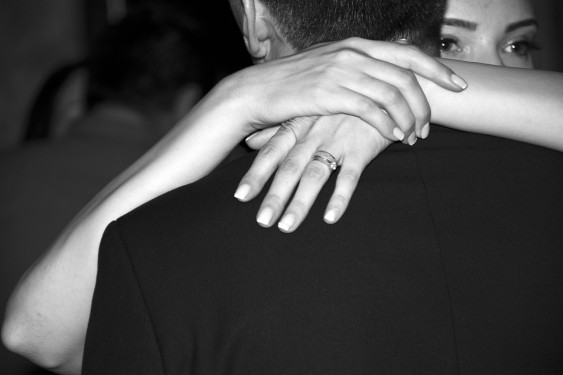The Wedding Dance by Amador T. Daguio is a poignant short story that delves into the complexities of love, tradition, and sacrifice within the context of a tribal community. Set in a Kalinga village in the Philippines, the story revolves around the struggles of a couple, Awiyao and Lumnay, and their cultural beliefs surrounding marriage and procreation. This analysis will provide a detailed exploration of the plot, characters, themes, and literary devices used in the story, shedding light on the cultural and emotional depth portrayed by the author.
The Wedding Dance | Summary
“The Wedding Dance” unfolds during a traditional wedding dance celebration in a Kalinga village. Awiyao, a strong and stoic man, is about to leave his wife, Lumnay, after seven years of marriage, due to her inability to bear him a child. In their tribe, having a child is crucial to a man’s identity and is believed to ensure the continuity of the community.
Awiyao visits Lumnay on the night of the wedding dance to bid her farewell. The couple’s conversation is emotional and heartfelt, with Awiyao trying to justify his decision, while Lumnay expresses her deep love for him and her feelings of inadequacy for not being able to give him a child.
Lumnay suggests that Awiyao could go out and dance with the other women, as if nothing happened. However, Awiyao admits that he does not want any other woman and that he still loves Lumnay. He explains that he needs a child to carry on his name and the tribe’s legacy, and waiting for seven harvests has been too long.
Lumnay, heartbroken and feeling helpless, reveals that she has done her best to conceive. She prayed to Kabunayan and made sacrifices, but she has not been blessed with a child. Awiyao acknowledges her efforts and admits that it is not her fault, but he feels compelled to find another woman who can give him a child.
Awiyao assures Lumnay that she has been a good wife, and he builds her a new fire to brighten the dark room. Lumnay, torn between love and sorrow, admits that she does not want any other man and refuses to marry another. Awiyao acknowledges that he does not want any other woman either, but societal expectations pressure him to do so.
The couple’s conversation becomes more intense, and Lumnay expresses her pain and frustration at not being able to fulfill Awiyao’s desire for a child. She recounts how she once butchered one of their pigs without permission to appease Kabunayan, the god of the Kalinga people, in the hopes of having a child. However, her efforts have been in vain.
Awiyao insists that he must try to have a child with another woman for the sake of the tribe’s future. Lumnay finally admits that she cannot change his decision, and she tearfully asks him to go back to the dance. Awiyao leaves, but not before giving her a precious heirloom of beads, symbolizing their love and connection.
As Lumnay contemplates the beauty of the bean plants in the mountain clearing, she decides to go to the dance and confront the village elders about her love for Awiyao. However, she hesitates and eventually chooses to leave the village. She walks alone in the moonlight, feeling the weight of her emotions and the pull of the wedding dance in the distance.
The Wedding Dance | Analysis
In “The Wedding Dance,” Amador T. Daguio crafts a poignant narrative that delves into the intricacies of human emotions and cultural traditions within the context of a Kalinga tribal community. The story’s exploration of love, sacrifice, gender roles, and the influence of destiny showcases the author’s adept storytelling and profound understanding of human nature.
The central conflict of the story revolves around Awiyao and Lumnay’s marriage, which faces a critical challenge due to Lumnay’s inability to bear a child. In the Kalinga tribe, having a child is of utmost importance, as it ensures the continuity of the tribe and the perpetuation of the family name. This cultural norm places immense pressure on Awiyao, who is torn between his love for Lumnay and the expectations placed upon him as a man of the tribe.
Awiyao’s visit to Lumnay on the night of the wedding dance marks a poignant moment of confrontation and emotional turmoil. The dark house they share becomes a metaphorical space where their conflicting emotions come to the fore. Awiyao’s stoic demeanor contrasts sharply with Lumnay’s emotional vulnerability, creating a palpable tension in their interaction.
The theme of sacrifice is prominent throughout the story, with Lumnay emerging as the epitome of selflessness. Despite her heartbreak and sorrow, she remains steadfast in her love for Awiyao. Her willingness to let him go and marry another woman highlights the weight of cultural expectations and her desire to see him happy, even if it means sacrificing her own happiness.
The symbolism of the beads adds depth to the narrative, representing the enduring bond between Awiyao and Lumnay. The beads are a precious heirloom passed down from Awiyao’s grandmother, signifying the timelessness of their love. When Awiyao gives the beads to Lumnay before leaving, it becomes a poignant gesture of remembrance and connection, reinforcing the emotional significance of their relationship.
Daguio expertly explores the theme of gender roles and the societal pressure on women to fulfill their traditional roles as wives and mothers. Lumnay’s worth is measured by her ability to bear a child, and her inability to do so leads to feelings of inadequacy and self-doubt. This theme highlights the oppressive nature of patriarchal societies, where women’s identities are often defined by their reproductive capabilities.
The author’s use of imagery is particularly striking, adding depth and emotion to the narrative. The vivid descriptions of the bean plants in the mountain clearing symbolize the persistence of life despite adversity. Lumnay’s presence among the bean plants serves as a metaphor for her resilience and determination to find strength even in the face of heartache.
The concept of destiny and acceptance of fate is a recurring motif in the story. Both Awiyao and Lumnay believe that their lives are shaped by Kabunayan’s will, the god of the Kalinga people. This belief in destiny adds a layer of fatalism to the narrative, where individuals feel compelled to follow predetermined paths, regardless of their personal desires.
The pacing and structure of the story contribute to its emotional impact. The intimate setting of the dark house allows for an intense and intimate exploration of the characters’ emotions. The use of flashbacks adds depth to the characters, revealing their shared history and the depth of their love.
In the resolution of the story, Lumnay’s decision to leave the village is a powerful act of agency and independence. Rather than passively accepting Awiyao’s decision, she chooses to face her emotions and take control of her life. This decision showcases her strength andnindependence, defying the traditional expectations that may have forced her to stay in a loveless marriage.
The Wedding Dance | Background
“The Wedding Dance” takes place in a Kalinga village, a community with rich cultural traditions and beliefs. The Kalinga people hold marriage and procreation in high regard, as having children is considered essential for the continuity of their tribe. Awiyao and Lumnay’s story reflects the societal pressure and expectations placed on individuals to conform to traditional norms.
The Wedding Dance | Theme
The story explores several themes, with the primary focus on cultural traditions and the impact of societal expectations on individual lives. The theme of love and sacrifice is central, as Lumnay is willing to sacrifice her happiness and endure heartache to uphold tribal customs and maintain Awiyao’s reputation. Additionally, the theme of gender roles and the pressure on women to bear children is evident in the story. The conflict between personal desires and cultural obligations highlights the complexity of human emotions and the internal struggle faced by the characters.
Characters
- Awiyao: Awiyao is depicted as a strong, stoic, and respected member of the Kalinga community. He values his tribal identity and believes in upholding cultural norms. Although he deeply loves Lumnay, he feels compelled to find another woman who can give him a child, as it is essential for his status and the tribe’s future. Awiyao is torn between his personal feelings for Lumnay and his duty to his tribe.
- Lumnay: Lumnay is portrayed as a devoted and loving wife who is heartbroken over her inability to conceive. She feels a deep connection to Awiyao and struggles to accept the idea of him marrying another woman. Lumnay’s character embodies the cultural expectations placed on women to bear children and the emotional turmoil they face when unable to fulfill this role.
Literary Devices:
- Imagery: The author uses vivid imagery throughout the story to create a sensory experience for the readers. For example, the description of the bean plants and the moonlit mountain clearing evokes a sense of serenity and contemplation.
- Symbolism: The beads given by Awiyao to Lumnay symbolize their love and connection. The beads are a precious heirloom and represent the strong bond between the couple despite their impending separation. The bean plants in the mountain clearing symbolize the persistence of life and growth despite the hardships faced by Lumnay.
Important Quotes:
“I’m sorry this had to be done. I am really sorry. But neither of us can help it.” –
Awiyao expresses remorse and the cultural pressure that has led him to leave Lumnay.
“Lumnay, if I did this, it is because of my need for a child. You know that life is not worth living without a child.” –
Here, Awiyao justifies his decision, highlighting the significance of having a child in their culture.
“The Wedding Dance” by Amador T. Daguio is thus a powerful and emotionally resonant short story that delves into the complexities of love, tradition, and sacrifice in a Kalinga tribal community. Through the characters of Awiyao and Lumnay, the author skillfully portrays the impact of cultural norms and societal expectations on individual lives. The story explores themes of love, sacrifice, gender roles, and the influence of destiny, all set against the backdrop of a traditional wedding dance celebration.
Daguio’s vivid imagery, powerful symbolism, and well-developed characters immerse the readers in the emotional journey of the protagonists. The narrative’s exploration of love, loss, and the weight of tradition on personal choices leaves a profound impact, prompting readers to reflect on the complexities of human emotions and the cultural values that shape our lives. “The Wedding Dance” stands as a timeless and thought-provoking piece of literature, shedding light on the universal struggle between personal desires and societal expectations.


